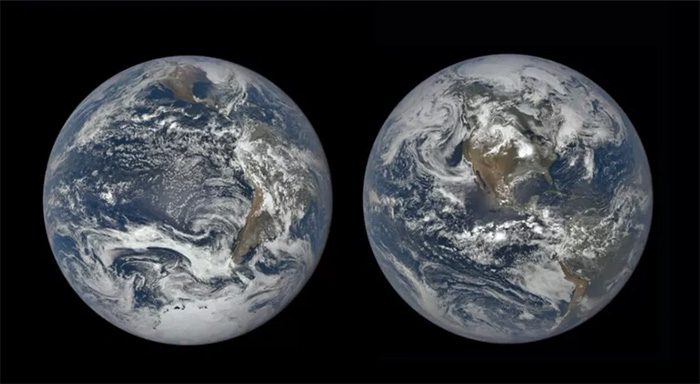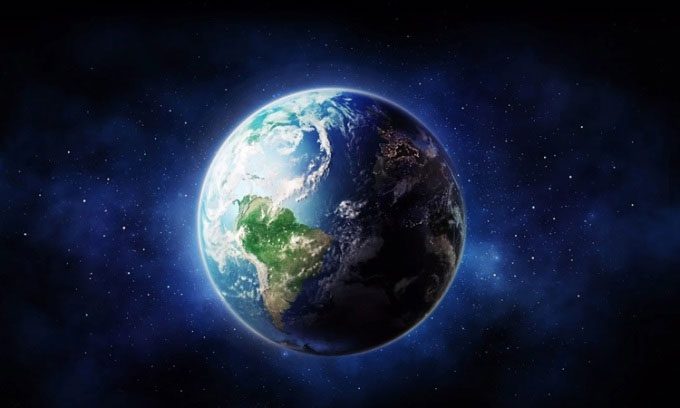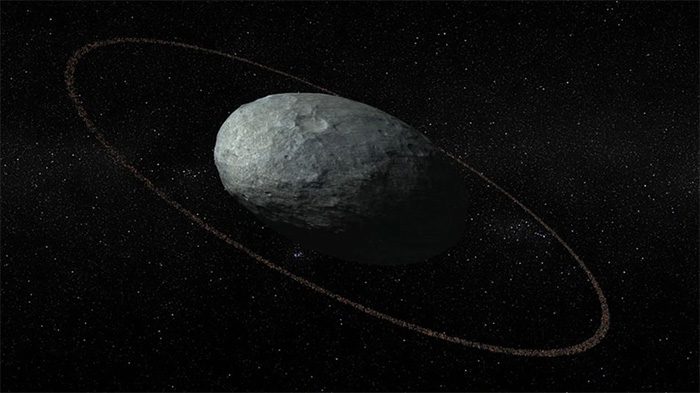In fact, most planets and moons are not perfectly round; they are often distorted in one way or another.
Typically, a planet spinning will experience the effects of centrifugal force. We can clearly feel how they work if we try spinning on a chair or riding a roller coaster. At that moment, you will feel pulled away from your center.

Although the effect is very small, the Earth is slightly flattened and bulges at the equator. (Photo: NASA).
Planets and moons behave similarly. The centrifugal force causes them to bulge at the equator, most noticeably in Jupiter and Saturn. If you look at the overall shape of these 2 “gas giants”, you will see that they are slightly compressed at the poles, with their midsection bulging out.
“The gravitational pull of an object will always be directed towards its center of mass. The larger the object, the greater its mass and the stronger the gravitational pull,” explains Jonti Horner, an astrophysics professor at the University of Southern Queensland. “But the problem is that gravity is actually weak. An object must be very large before it can create enough gravitational pull to overcome the strength of the material that forms it. Smaller solid objects (a few meters or kilometers in diameter) therefore have gravity that is too weak to shape them into a sphere.” This is why celestial bodies and smaller planets have less uniform shapes, such as comet 67P, which resembles a rubber duck.
To explain this, scientists indicate that the degree of distortion of each planet depends on their rotation speed. It is easy to demonstrate this with Jupiter and Saturn being the fastest rotating planets in the Solar System. Clearly, the faster something spins, the greater the centrifugal force acting on it.
Our Earth is no exception to this trend. If you were to sit on an artificial satellite or spacecraft looking down at Earth, you would see that our blue planet is actually slightly oblate at the North and South poles, with the equatorial radius being about 21,385 km larger than the radius between the two poles.

The Earth is slightly bulging at the equator. (Photo: World Atlas).
As it rotates on its axis, every part of the Earth experiences the effects of centrifugal inertia and tends to be pushed outward. Furthermore, the centrifugal force is proportional to the distance from that point to the Earth’s axis, meaning the farther you are from the axis on Earth’s surface, the greater the centrifugal force. Therefore, the part of the Earth’s crust near the equator experiences more centrifugal force than the part at the poles.
Thus, during the formation of Earth, due to the different impacts of centrifugal force, the “belly” of the Earth bulges out while the two poles flatten. The radius at the equator is larger than the radius at the poles.
The gravitational force is not strong enough to pull the Earth into a perfect sphere, and this is not the only force affecting the shape of the planet. In 1671, astronomer Jean Richter traveled from Paris, France, to Cayenne, Guyana in South America. He carried a pendulum clock with him. While the clock ran accurately in Paris, Richter noticed that in Cayenne, it ran slow by 2.5 minutes each day. This was not a big issue; the pendulum was adjusted to keep the clock running accurately. However, when Richter returned to Paris, he discovered that the clock was running fast by 2.5 minutes each day. Similarly, even though jumping up and down in Brazil or Canada feels the same, the rate at which you fall in both places is not the same.
After hearing about Richter’s clock, mathematician Christiaan Huygens recognized it as experimental evidence that the Earth is rotating. The change in the clock’s speed was not due to some quirky error; it was because of the shape of the Earth. Later, Newton used data from a similar pendulum clock and the bulging equator of Jupiter to demonstrate that the Earth bulges at the equator due to centrifugal force. Near the equator, the gravitational force acting on you is less than near the poles, as you are farther from the bulging part of the Earth.

Dwarf planet Haumea is so affected by centrifugal force that it is nearly egg-shaped. (Photo: NASA).
Another typical example of centrifugal force acting on an object in space is the dwarf planet Haumea. This planet is located in the Kuiper Belt, a region of icy objects beyond Neptune’s orbit, and spins very quickly (completing one rotation every 4 hours). Its high speed has caused it to flatten to the point of resembling a horizontal egg.


















































